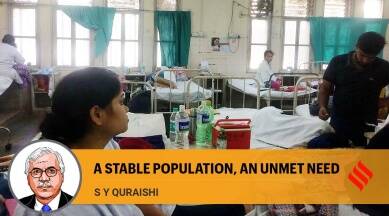Live Classes

India has achieved the replacement rate for its population. Now, 'unmet need' for family planning tools must be provided for.
The wait is over. The National Family Health Survey (NFHS) 5 report that was awaited for nearly six months is finally out. And it provides a heartening outlook. The NFHS is a large, multi-round survey that, inter alia, provides information on fertility, infant and child mortality, the practice of family planning, reproductive health, nutrition, anaemia, quality and utilisation of health and family planning services. Started in 1992-93, it has culminated in the fifth round 2019-21. The surveys provide essential data needed by the Ministry of Health and Family Welfare and other agencies for policy and programme purposes. The Ministry assigned the nodal responsibility for the task to the International Institute for Population Sciences(IIPS), Mumbai. IIPS collaborates with a number of field Organisations to conduct the survey in different states. Several international agencies are involved in providing technical and financial assistance, mainly USAID, DFID, UNICEF, and UNFPA. The report shows that India has finally achieved the replacement rate of 2.1TFR (Total Fertility Rate is the total number of children a woman will bear in her lifetime). In fact, it has gone below the mark to 2.0. There are, of course, large interstate variations. Several states are well below the replacement level, compensating for the five states that are above the national average of 2. The lagging states are UP, Bihar, Jharkhand, Manipur and Meghalaya. Significantly, there were four states originally of the Hindi belt which were keeping the figures poor, namely, Bihar, Madhya Pradesh, Rajasthan and Uttar Pradesh, known by their interesting acronym of BIMARU. Two states, Rajasthan and MP, have struggled to get out of this group, while Jharkhand and the two northeastern states have replaced them. UP and Bihar because of their sheer size are pulling down the national average. Their TFR is below the national average of 2 with Bihar at 3, Meghalaya at 2.9, UP at 2.4, Jharkhand at 2.3 and Manipur at 2.2.
Download pdf to Read More